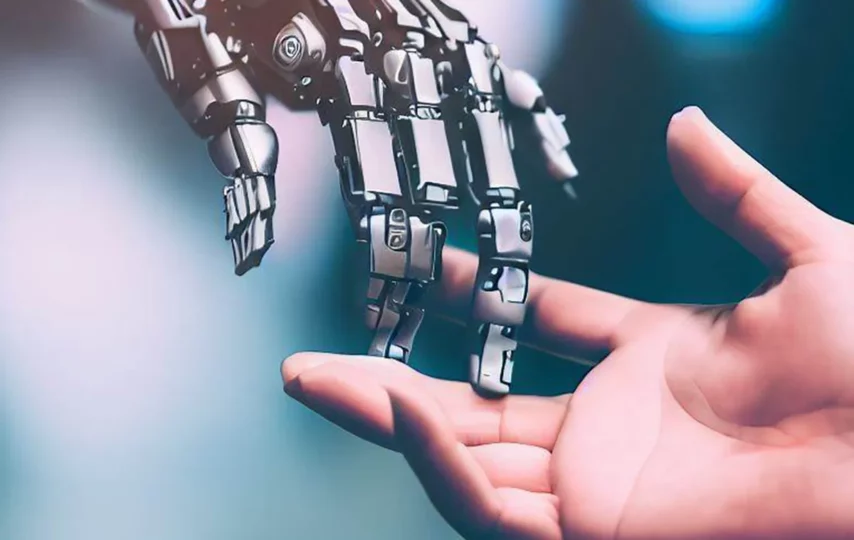Security cameras have long been an essential component of safeguarding homes and businesses. They provide a watchful eye on your property, enhancing security and deterring potential threats. However, the integration of artificial intelligence (AI) and video analytics is taking security camera installations to the next level. In this article, we’ll explore how these innovative technologies are reshaping the landscape of surveillance and significantly enhancing the functionality of security cameras.
The Evolution of Security Camera Technology
Traditional security cameras primarily captured footage, which required manual monitoring to identify suspicious activities. While they served their purpose, these cameras often overwhelmed security personnel with hours of footage to review. As a result, crucial events might be missed, leading to security vulnerabilities.
The integration of AI and video analytics has addressed these shortcomings, offering the following advancements:
1. Real-time Alerts: AI-powered security cameras can identify unusual activities in real-time and trigger alerts. This immediate notification allows for swift action in response to potential threats.
2. Object Recognition: AI can identify and classify objects within the camera’s field of view. This includes distinguishing between humans, vehicles, animals, and other objects, reducing false alarms.
3. Facial Recognition: Some advanced security cameras use facial recognition technology to identify individuals. This is valuable for access control and identifying authorized personnel.
4. Behavior Analysis: AI can analyze the behaviour of objects within the camera’s range, identifying suspicious actions or patterns that may indicate a security breach.
5. License Plate Recognition: In the case of security cameras used for traffic monitoring or access control, AI can read and recognize license plates, enhancing security and automation.
6. Counting and Tracking: Video analytics can count people, vehicles, or objects, and track their movement. This is useful for crowd control and retail analytics.
Benefits of AI and Video Analytics in Security Cameras
The incorporation of AI and video analytics into security camera installations offers numerous advantages that significantly elevate their functionality:
1. Proactive Security: With real-time alerts and event-triggered notifications, AI-powered cameras provide a proactive approach to security, allowing immediate responses to potential threats.
2. Reduced False Alarms: By accurately distinguishing between humans, animals, and objects, AI minimizes false alarms, ensuring that security personnel focus on genuine security breaches.
3. Enhanced Analytics: AI’s capacity for behavior analysis, counting, and tracking can provide valuable insights for businesses. This data can be used to optimize operations, improve customer experiences, and make informed decisions.
4. Efficient Investigations: AI and video analytics simplify the process of investigating security incidents. Recorded footage is tagged with relevant data, making it easier to locate and analyze specific events.
5. Facial Recognition: The ability to recognize faces enhances access control, whether in residential or commercial settings. It can also be a valuable tool for law enforcement and investigations.
6. Integration and Automation: AI-powered security cameras can seamlessly integrate with other security systems, such as access control or alarms, creating a comprehensive security ecosystem.
Applications of AI and Video Analytics in Security Camera Installations
The integration of AI and video analytics is revolutionizing various industries, offering enhanced security and operational benefits:
1. Residential Security: AI-powered security cameras at homes provide homeowners with real-time alerts, facial recognition for access control, and the peace of mind that comes with proactive security.
2. Retail and Commercial: In retail, AI can analyze customer behavior, track foot traffic, and reduce theft. In commercial settings, it enhances access control, building security, and operational efficiency.
3. Traffic and Transportation: AI and video analytics are invaluable for monitoring traffic, tracking vehicle movements, and enforcing traffic regulations.
4. Industrial and Warehousing: These settings benefit from AI’s ability to enhance safety, monitor employee behaviour, and optimize logistics and inventory management.
5. Public Spaces and Critical Infrastructure: AI can significantly enhance security in public spaces, such as airports, stadiums, and government buildings, by detecting and alerting to suspicious activities.
Considerations for Security Camera Installation
When considering AI-powered security camera installations, keep the following factors in mind:
1. Camera Placement: Proper camera placement is essential to ensure that AI can effectively analyze and monitor the desired areas.
2. Data Privacy: Address data privacy concerns by implementing policies that govern the use and storage of recorded data, especially when using facial recognition.
3. Scalability: Consider the scalability of your security system, especially if you plan to expand your camera network in the future.
4. Integration: Ensure that your security cameras can seamlessly integrate with other security and automation systems, creating a unified ecosystem.
5. Maintenance and Updates: Regular maintenance and software updates are vital to keeping AI-powered security cameras running smoothly and securely.
Partnering with a Professional for Security Camera Installation
To make the most of AI and video analytics in your security camera installations, it’s advisable to partner with a professional security system provider. Here’s how they can assist:
1. System Design: Professionals can design a security camera system tailored to your specific needs, ensuring optimal coverage and functionality.
2. Installation and Integration: They will expertly install and integrate security cameras, ensuring that all components work seamlessly together.
3. Training and Support: Professionals can provide training for your staff on system operation and offer ongoing technical support.
4. Compliance and Regulations: They will ensure that your security camera installation complies with relevant regulations and privacy laws.
5. Maintenance and Updates: Professionals offer regular maintenance to keep your system up to date and functioning optimally.
In Conclusion
AI and video analytics have transformed security camera installations into powerful tools that provide proactive security, reduce false alarms, and enhance operational efficiency. These technologies are applicable in a wide range of settings, from homes and businesses to public spaces and critical infrastructure. When considering AI-powered security cameras, working with a professional security system provider can help you design, install, and maintain a comprehensive security ecosystem that effectively safeguards your interests.








